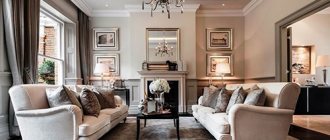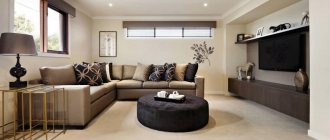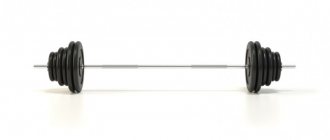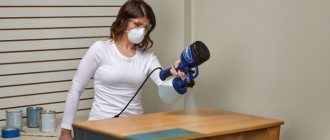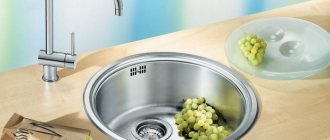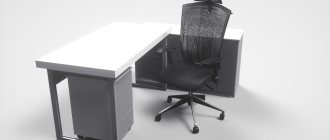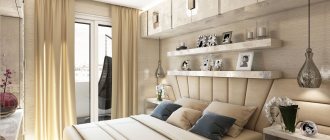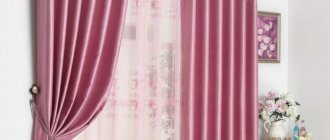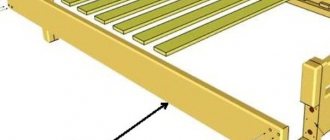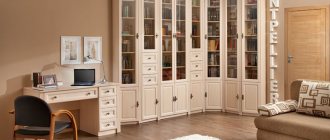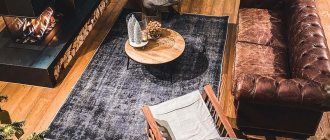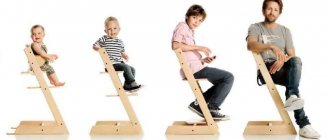Legal framework, regulations
The Ministry of Education and Science of the Russian Federation approved the Federal State Educational Standard (FSES) of basic general education dated December 17, 2010 No. 1897, the purpose of which is to systematize and standardize educational processes and ensure their high quality in schools.
The document is compiled on the basis of lists of specialized requirements, including:
- Order of the Ministry of Education and Science of the Russian Federation dated October 4, 2010 No. 986 on the minimum technical equipment of educational processes in student classes;
- SANPIN 2.4.2.2821-10 dated December 29, 2010 No. 189 (currently updated version) on sanitary and epidemiological requirements for educational premises and the organization of the learning process.
For primary schools, the Federal State Educational Standard is determined by order of the same Ministry of Russia dated October 6, 2009 No. 373. Last edition dated September 22, 2011 No. 2357.
The main document on which educational institutions rely today when recruiting is Order of the Ministry of Education and Science of Russia dated March 30, 2016 N 336 .
Educational organizations have the right to make changes and clarify the specified norms and rules, adhering to the established regulations, at least once every 10 years.
General requirements
According to standardized operating rules, student tables must last at least 10 years, and chairs - at least 5 years.
Racks, cabinets and shelves are designed to last for 20 years. The text of GOST and SanPiN contains general requirements that furniture for a school office or other educational space must meet:
- Pedagogical. The sets ensure the conduct of a lesson, for example, in a chemistry classroom, special tables are needed; in a drawing classroom, they are combined with easels.
- Sanitary and hygienic. A set of standards is aimed at maintaining acceptable conditions for learning. Pay attention to safety, reliability, durability. The coating should be easy to clean, the materials should not release components harmful to health into the air.
- Ergonomic. The standards take into account the physiological and anatomical characteristics of the child’s body, taking into account the student’s age and height. Desks and chairs should be comfortable. Pay attention to the distance between adjacent tables, the width of the aisles between rows, and the distance of the board from the first row.
- Production and economic. You need to choose high-quality furniture and assemble it correctly so as not to buy it every 2-3 years.
- Architectural and artistic. The color of furniture in the school is selected in accordance with the design. There are special headsets for schoolchildren studying under a special program - for such cases there are recommendations in GOST materials.
The safety of objects comes first: the absence of sharp corners, the use of a rounded metal profile, adjustable legs, stability of desks, chairs and tables.
Technical equipment
The Federal State Educational Standard defines a set of equipment that is recommended for installation in each student class of a comprehensive school to improve the educational process:
- Multimedia players and tape recorders (optional, these can be complex devices);
- TV;
- 808i;
- Projector screen (projecting images onto the wall is not allowed);
- Computers or tablets for coworking spaces.
To watch TV movies and programs, it is recommended to plan a separate area ensuring the necessary safe distances for the eyes.
According to Order of the Ministry of Education and Science of Russia dated March 30, 2016 N 336, different sets of interactive and scientific equipment can be selected for each specialized classroom.
Selecting student desks
The design is determined so that the student’s posture is correct, the pose is the least tiring, convenient for reading, drawing and writing.
Features of a good desk:
- Allows you to sit during training in a comfortable position that does not interfere with normal growth and development.
- The design is simple and does not cause any difficulties when used by a schoolchild or when cleaning.
- The size is selected so that the student does not interfere with his neighbor’s studies.
Structural elements are securely fastened so that there is no play, and high-quality materials are used.
Varieties
A double desk is considered classic, but the latest educational technologies suggest seating schoolchildren at single tables with benches. The second option is more convenient for the student. It is purchased if there is enough space in the classroom for placement.
Types of school desks:
Adjustable ones have been used for many years. When children grow up, the lid and seat of the chair are lifted using a mechanism.
Orthopedic ones are intended for schoolchildren who have problems with the musculoskeletal system. They also prevent the development of scoliosis.
With a hinged lid, it is used in classrooms where there is little space. This model allows you to answer while standing.
Monoblock models, where the table is inextricably connected to the bench, are more often used for primary school, when the student gets used to correct posture.
Table of correspondence between desks and child's height
The design of a school desk must comply with accepted standards - take into account the height of the seat and table top, the angle of the lid, the gap between the edge of the table and the back. These characteristics correspond proportionally and depend on the student’s height.
Table of parameters for child growth:
The seat is located at the height of the length of the shin from the hole under the knee to the sole, taking into account a two-centimeter heel, while the leg is bent at the knee at an angle of 90°. The width of the bench provides 2/3 or 3/4 hip support. The vertical line from the edge of the tabletop to the surface of the seat (differentiation) is taken at the level of 1/7 or 1/8 of the height.
Decoration of an elementary school office according to the Federal State Educational Standard
The design of classrooms should help solve educational problems. The goal is achieved by the joint work of the teacher, students and parents. Particular attention is paid to the general background of the class. The right wall color helps create a calm, comfortable environment. It has a positive effect on the emotional state of the child, relieves nervous tension and excessive excitability.
Matte coatings in calm, light shades are suitable for wall decoration. Bright colorful stands look impressive against a plain background and attract the attention of children. Their themes and design techniques depend on the imagination and creative ideas of the teacher. Colors recommended for walls and panels of primary school classrooms according to the Federal State Educational Standard.
· blue
· orange
· green
· beige
· yellow
· turquoise
Requirements for chairs
More often, manufacturers offer models made of plywood with a steel frame. The plywood for the seat and backrest is shaped during the manufacturing process so that it comfortably follows the curve of the body. There are options with straight planes for teachers in the staff room or office.
Types of supporting structures:
On legs
With runners
T-shaped
School chairs must be:
- stable, reliable;
- durable;
- durable, able to withstand the weight of the person sitting.
The back should be wide, profiled, composed of several elements for additional support.
Comprehensive turnkey office planning
TD Komplektant offers comprehensive equipment for school classrooms in accordance with Order No. 336 of the Ministry of Education of the Russian Federation and the Federal State Educational Standard, from layout design to delivery of certified equipment, including turnkey.
When selecting components, safety, convenience and hygiene standards, as well as interior features, are taken into account. For each category, we offer a choice of the most optimal furniture and educational equipment according to the needs of each individual class and even the school program.
The company cooperates with manufacturers of desks and multimedia equipment for training, so supplies of necessary equipment and furniture are carried out in a short time on favorable terms, which is especially important for budgetary institutions. We work all over Russia.
We provide free equipment demonstrations and teacher training.
To order cabinet configuration, demonstration or price list, leave a request on the website or call 8 (800) 200-75-40.
Requirements for a chalkboard
Typically, schools use wooden, metal or plastic surfaces on which they write with chalk. The coating is matte paint of brown, black, dark green . There are models with a porcelain surface layer - the abrasion-resistant rough surface lasts up to 10 - 20 years.
Requirements for various options of modern boards:
Flipchart. Sheets of paper on the surface should be easily torn off and replaced with new ones. They write on these not only with markers, but also with pencils and pens.
Magnetic board. Signs, drawings, and letters must be securely attached to surfaces containing magnetic powder and polymers. The strength of the structure is increased by a frame made of aluminum strip.
Cork board. They do not write on such a surface, but only place illustrations on buttons, so the surface must withstand numerous punctures.
Classic boards are either flat or with closing doors. Under them there is a shelf for collecting crumbling chalk. The surface is made of washable material.
Business Solutions
clothes, shoes, products, toys, cosmetics, appliances Read more
material, in-production, sales and transport organizations Read more
tobacco, shoes, consumer goods, medicines Read more
meat, procurement, machining, assembly and installation Read more
radio frequency identification of inventory items More details
automation of accounting operations with alcoholic beverages Read more
Requirements for furniture and equipment of other school premises
With the development of new educational directions, the equipment of school furniture is changing. Requirements for the environmental friendliness of the materials used remain relevant. They must ensure structural strength and operational safety.
School furniture must be adapted to new teaching methods and means of transmitting information.
Dining room
A mandatory requirement is the ease of wet cleaning of furniture.
Surfaces must be resistant to household cleaning chemicals. Requirements for the headset in the school canteen (SanPiN 24.2.28.21 – 2010):
- The lower horizontal surfaces of furniture (footboards, seats, lintels, shelving shelves) are positioned from the floor at a height of at least 15 cm to allow for wet cleaning.
- Headsets should create coziness, be light, beautiful, and aesthetically attractive.
- The height of chairs and tables is chosen according to a standard that is designed for the convenience of eating by schoolchildren of different ages.
Upholstery with artificial leather is allowed; plastic plugs are installed on the legs to reduce sound when moving.
Library
The reading room and the librarian's workplace should also be equipped with environmentally friendly materials. Use natural wood or pressed boards on a harmless adhesive base.
Standard requirements for library sets:
- Pay attention to the ergonomics of furniture.
- The reading room is used by adults, small schoolchildren and teenagers, so zones with appropriate heights of chairs and tables are allocated for different groups.
- Tables and chairs should be comfortable so that nothing distracts the child from studying or reading.
Ivan Bokorezov
Furniture columnist and designer
Ask a Question
Heads of educational schools sometimes choose economy class headsets for the library. This is not prohibited, but a certificate of compliance with sanitary standards and a quality certificate are required. Manufacturers of cheap products may violate environmental and safety standards.
Assembly Hall
The furniture includes chairs, stands, stage structures . Seats are sometimes combined into one group of 3-4 elements.
They are purchased and assembled taking into account the requirements:
- The supporting elements must withstand the required loads, the legs must not bend or break.
- For ease of movement along an empty row, the seats and armrests should be turned over and placed in a vertical position.
- The furniture fittings are of high quality (the hinges do not sag or jam).
- Seats, backs and legs do not deteriorate from substances used for sanitation.
The surface is made of wood or plywood without the participation of formaldehyde. Soft upholstery made of washable wear-resistant materials, for example, leatherette, vinyl leather, is allowed. Metal or wood is used as a frame.
Wardrobes/dressing rooms
Such rooms are equipped with hangers, cabinets, hooks for hanging clothes, and shoe storage compartments. In sports locker rooms there are benches for comfortable changing shoes while sitting. Hangers can be wall-mounted, floor-mounted or mobile on wheels.
Requirements for furniture in a school wardrobe:
- The height of the hooks corresponds to each age group; for this purpose, sections are allocated for high school students and younger students.
- The hangers are stable, do not wobble, are well secured, and do not fall.
- Hooks are made of durable steel, broken parts are replaced with new ones.
- Benches for changing shoes should be of different heights.
Cabinet doors must have handles and mortise locks. Some school locker rooms do not have shoe lockers. This is a violation.
Special rooms
Chemistry class equipment
This category includes rooms for laboratory work in physics, chemistry, workshops, and art classes . The surface of the tables varies depending on the purpose - there is a regular coating that is chemically resistant.
The laboratory must have:
- specialized tables with a hygienic quality certificate and a certificate of compliance with technical requirements;
- cabinets or racks for storing educational materials and tools;
- cabinets for placing equipment;
- furniture for the teacher to work and demonstrate experiments;
- tables (with a side) and chairs for students;
- exhaust ducts (mounted or built-in).
Workbenches in a school workshop should not have deformed planes, the working surface should not be tilted so that heavy tools do not roll under your feet. The design of the desktop is firmly fixed to the floor and adjusted in height.
Business Solutions
- the shops
clothes, shoes, products, toys, cosmetics, appliances Read more
- warehouses
material, in-production, sales and transport organizations Read more
- marking
tobacco, shoes, consumer goods, medicines Read more
- production
meat, procurement, machining, assembly and installation Read more
- rfid
radio frequency identification of inventory items More details
- egais
automation of accounting operations with alcoholic beverages Read more
- The gloss of the coating is no more than 49%.
- The working surface is easy to clean from dirt. Science classroom tables are equipped with a protective layer against chemicals.
- Compliance with all epidemiological standards.
Furnished products for student use must have the following parameters:
The dimensions of educational furniture and its marking at school (according to SanPiN) are far from the only conditions that must be met. Requirements are also put forward for assembly:
- Reliable fixation of all structural parts.
- Impossibility of manually separating hardware elements.
- The absence of any irregularities on the outer surface. Sharp edges are rounded and holes in metal pipes with a diameter greater than 7 mm are closed or hidden.
- Contaminating parts are hidden.
GOST 22360-95 regulates the proper fixation of large objects:
- A strong and immovable connection of all parts of the structure and the impossibility of disassembling it manually.
- Reliable fastening of the stand (if available) to the object.
Furniture used in educational institutions must have special markings, which are indicated in Russian or the official regional language. It is prohibited to make any marks on the work surface. Tables are marked using special colored stickers that correspond to the height categories of GOST 11015 and 11016.
How to mark the numbers of desks and chairs by height (SanPiN)
Student furniture products must be marked taking into account the height group of the children who will study behind them. There is a single classification that remains unchanged and mandatory for all educational institutions. It includes several indicators: height group, marked color, table and chair height. On this basis, the following are distinguished:
- First: 110 - 115 cm, orange, 46 and 26 cm.
- Second: 115 - 130 cm, purple, 52 and 30 cm.
- Third: 130 - 245 cm, yellow, 58 and 34 cm.
- Fourth: 145 - 160 cm, red, 64 and 38 cm.
- Fifth: 160 - 175 cm, green, 70 and 42 cm.
- Sixth: over 175 cm, blue, 76 and 46 cm.
There is also a zero group that is not included in the main table. As a rule, it is installed in kindergartens and other preschool institutions. It is applicable for children whose height does not exceed 95 centimeters. The first and second categories are not common, since the average height of a child entering first grade is approximately 130 cm.
